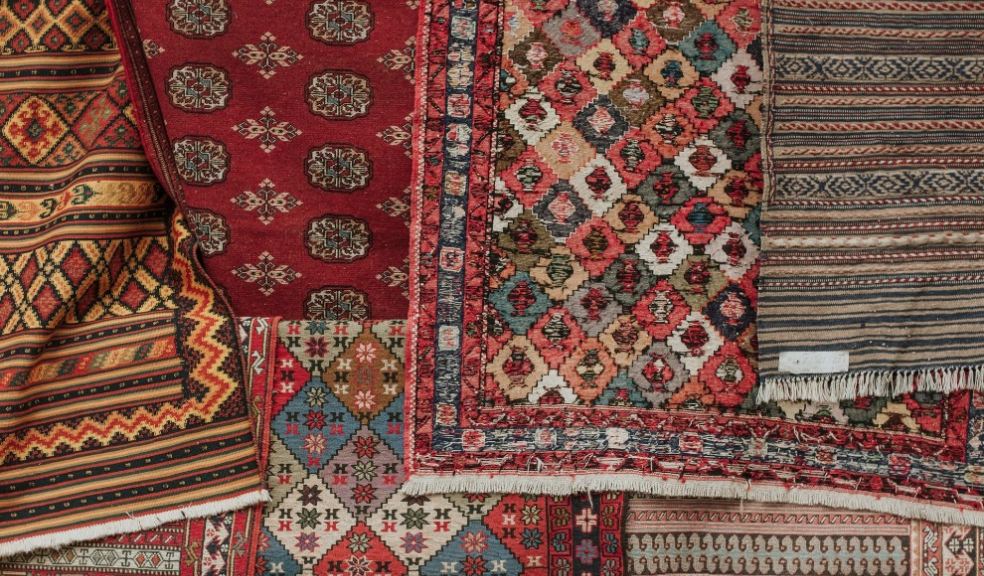
The Art and Heritage of Moroccan Berber Rugs: Stories Woven into Every Pattern
Moroccan Berber rugs are more than decorative pieces; they’re woven with the history, culture, and spirit of the Berber people, also known as the Amazigh, who inhabit North Africa’s rugged Atlas Mountains. Each rug tells a unique story through its patterns, colors, and craftsmanship, preserving traditions that have been passed down for generations. The symbolic language embedded within these rugs represents family heritage, natural landscapes, and spiritual beliefs, making every rug a piece of living history. For anyone interested in cultural heritage, exploring authentic Moroccan Berber rugs like those available through https://www.hydeandhare.com/collections/berber-rugs offers a fascinating insight into a world where art and culture intertwine.
In this article, we’ll journey into the cultural significance of Moroccan Berber rug patterns, uncovering the artistry, heritage, and symbolism that make each piece a powerful testament to the Berber way of life.
The Origins of Berber Rugs: A Tradition Rooted in the Atlas Mountains
The Berber people have inhabited North Africa for thousands of years, living primarily in Morocco’s Atlas Mountains. Their semi-nomadic lifestyle necessitated durable, warm textiles that could withstand the region’s harsh mountain climate. Berber rug-making evolved out of necessity, yet quickly became an art form in its own right. Each rug was handwoven with natural fibers such as sheep’s wool, dyed using pigments from local plants, and adorned with symbolic motifs.
The patterns found in Berber rugs reflect not only the personal stories of the artisans who create them but also the collective history of the Berber people. Every symbol, line, and color in these rugs has a deeper meaning, resonating with centuries-old traditions and beliefs. Over time, these patterns have come to represent the identity and resilience of the Berber people, preserving their cultural memory and artistic expression.
Understanding the Symbolism of Berber Rug Patterns
The patterns in Moroccan Berber rugs are a visual language, with each motif carrying specific cultural and symbolic meanings. Here are some of the most common symbols found in these rugs and what they represent:
- Diamond Shapes: Often seen as a protective symbol, the diamond motif is frequently used to ward off the “evil eye.” It represents fertility and the journey of life, reflecting the Berber people’s respect for life’s cyclical nature.
- Triangles and Zigzags: These shapes represent the mountains and valleys of the Atlas region, capturing the rugged landscape of Morocco. Triangles often symbolize femininity and protection, while zigzag lines are said to represent the rivers and pathways the Berber people travel.
- X and Cross Motifs: Symbols of unity and family, these designs are often used in rugs meant for family gatherings. They represent the interconnectedness of life, hinting at the relationships and community bonds central to Berber society.
- Abstract Animal and Plant Shapes: Since Berber culture is closely tied to nature, many rugs feature abstract representations of animals and plants. These designs often symbolize fertility, growth, and harmony with the environment.
Each pattern has its roots in ancient belief systems, passed down through generations, making Moroccan Berber rugs a rich tapestry of cultural narratives.
Regional Variations: Unique Styles Across Moroccan Berber Tribes
Moroccan Berber rug patterns and weaving techniques vary significantly between tribes and regions, each bringing its distinct flavor and style. Here’s a look at some of the most renowned styles:
1. Beni Ourain Rugs
Beni Ourain rugs are among the most recognizable Berber styles, characterized by their minimalist black and white or cream color palette and geometric diamond patterns. Made by the Beni Ourain tribe in the Middle Atlas Mountains, these rugs are traditionally used for warmth. Their simplicity makes them highly sought after in modern interior design, yet their patterns still hold deep cultural meaning, representing themes of protection and life’s journey.
2. Azilal Rugs
Originating from the Azilal province, these rugs are often colorful, with red, orange, and blue dominating their designs. They blend abstract, asymmetrical shapes with vivid colors, making them visually striking. Azilal rugs are deeply expressive, often reflecting the weaver’s emotions or dreams. The spontaneity of these designs symbolizes the Berber people’s adaptability and creativity, blending tradition with a touch of personal interpretation.
3. Boujad Rugs
From the Haouz region near Marrakech, Boujad rugs are known for their warm hues of pink, red, and purple. These rugs typically feature complex patterns with flowing lines, representing the desert landscapes and reflecting a more feminine aesthetic. Boujad rugs are cherished for their intricate designs, representing love, fertility, and the strength of women in Berber society.
Crafting a Berber Rug: A Time-Intensive Art
Creating a Berber rug is a meticulous process that can take weeks or even months, depending on the size and intricacy of the design. The rugs are woven on vertical looms, with each knot carefully tied by hand, often by women who have learned the art from their mothers and grandmothers. This labor-intensive process requires patience, precision, and a deep connection to the cultural significance behind each symbol.
The natural wool used in Berber rugs is often hand-spun and dyed using local plants, flowers, and spices, creating colors that reflect the Moroccan landscape. For example, the deep reds often found in Boujad rugs are derived from pomegranate, while saffron yields vibrant yellows, and indigo plants produce blues. Each rug, therefore, not only embodies a story through its pattern but also carries the essence of the environment in which it was made.
Berber Rugs as Cultural Artifacts in Modern Times
Today, Moroccan Berber rugs have gained international recognition, appreciated both for their aesthetic appeal and cultural value. In an era where machine-made carpets dominate the market, authentic Berber rugs stand out as handcrafted pieces of art that connect us to a distant past. They serve as a bridge between the modern world and ancient traditions, reminding us of the value of slow craftsmanship and cultural heritage.
Many buyers of Berber rugs may not initially understand the stories and symbols behind them, yet they are drawn to the authenticity and timelessness of these designs. As interest in these rugs has grown, so too has awareness of their cultural significance. By supporting the artisans who create these rugs, buyers contribute to the preservation of Berber culture, allowing future generations to experience and appreciate this unique art form.
Caring for Your Berber Rug: Preserving Tradition
Owning a Berber rug means embracing not only its beauty but also its heritage. With proper care, these rugs can last for generations, maintaining both their aesthetic and cultural integrity. Here are some tips to care for your Berber rug:
- Regular Cleaning: Vacuum your rug lightly to prevent dust buildup, but avoid harsh brushes that could damage the wool fibers.
- Spot Cleaning: For stains, use a mild soap and warm water to gently blot the affected area. Avoid soaking the rug, as excessive moisture can weaken the wool and colors.
- Professional Cleaning: For deep cleaning, consider using a professional rug cleaner experienced in handling wool and handmade textiles to ensure the rug’s quality is maintained.
The Future of Berber Rugs: Adapting Tradition in a Modern World
As global demand for Moroccan Berber rugs grows, there is a movement within Berber communities to maintain the authenticity of their craft. Artisans are increasingly finding ways to balance tradition with modern influences, experimenting with new patterns, colors, and materials. Younger generations are learning the craft, preserving their cultural heritage while also introducing innovative designs that appeal to contemporary tastes.
In the face of mass-produced imitations, the importance of recognizing and valuing authentic Berber rugs becomes clear. Each genuine Berber rug tells a unique story, woven by an artisan deeply connected to their cultural heritage. When you invest in a real Berber rug, you’re not just buying a piece of decor—you’re supporting the preservation of a rich and meaningful tradition.
Conclusion: Embracing the Stories of Moroccan Berber Rugs
Moroccan Berber rugs are more than just floor coverings. They are cultural artifacts, woven with generations of history, tradition, and belief. Each rug pattern represents the Berber people’s connection to nature, family, and spirituality, offering a window into a way of life that has endured for centuries.
Whether you’re drawn to the simple elegance of a Beni Ourain rug or the vibrant patterns of an Azilal piece, understanding the cultural significance behind these patterns deepens your appreciation of this art form. With every Berber rug you encounter, remember the stories and symbols woven into its fibers—stories of resilience, beauty, and a timeless connection to the land and people of Morocco.












